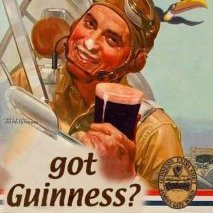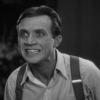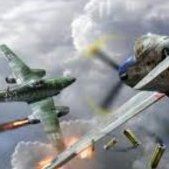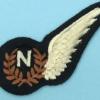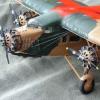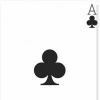Search the Community
Showing results for tags 'Whirlwind'.
-
Starting the new year off on a vac foot. Cooper Details Westland Whirlwind. Lets see what kind of mayhem I can come up with Vacs this year
- 32 replies
-
- 17
-

-
- Cooper Details
- 1/48
-
(and 1 more)
Tagged with:
-
Sure hope that 'Cannon Fighter' box also gets upgraded.
- 5 replies
-
- 6
-

-

-
- Special Hobby
- Westland
-
(and 1 more)
Tagged with:
-
Twenty one volumes of the Wingleader Photo Archive series. The new Typhoon book makes it 21 volumes! Still big original photos, still 'I never knew that!' text, and still £19.95. Check out the range at: www.wingleader.co.uk
-
Westland Whirlwind HAS.22 (A02056V) 1:72 Airfix "Vintage Classics" The S-55 Was Sikorsky's model number for the H-19 Chickasaw. The design was financed privately by the company but soon taken up by the new US Air Force. Westlands already had a licence co-operation with Sikorsky dating back to 1948 and the S-51 Dragonfly. Westlands had a history with improving the Powerplant on offer with the Whirlwind with HAS 5 introducing the 850hp Alvi Leonides Major, and later fitting 1000hp Bristol Siddeley Gnome. The Gnome also featured an early computer controlled fuel system which reduced pilot workload. Even though this is listed as Westland aircraft the HAS.22 were in fact 15 S-55/HO4S-3 built by Sikorsky for the Royal Navy with a 700hp Wright R-1300-3 Engine. The Kit This is a re-boxing of Airfix's original kit from 1956 and released under their Vintage Classics Series, as such its a tooling of the time. The plastic parts are still pretty good, although the clear parts are a tad think and not too good. Construction starts in the cockpit. There are seats and figures for both the pilot and co-pilot. Both figures get a collective control but no cyclic. In front an instrument panel is provided. At the rear of the cockpit the transmission tunnel complete with sound insulation padding goes in. Once complete the cockpit section plus all the cabin windows can be added into the fuselage and this closed up. There are no details for the main cabin provided in the kit. It is recommended that 5 grams of weight is added into the nose. Next up the main rotor is completed with the three blades being sandwiched between an upper and lower part of the rotor head. Following this we can move back to the main fuselage and attach the four main wheels and their supporting legs. Above the cabin door the helicopters winch is fitted. At the nose the exhaust is added. To the rear aerials, the tail skid and tail rotor are added. The last items to go on are the front cabin glass and the main rotor. Markings There is only one decal options on the sheet. WV223 No.781 NAS, RNAS Lee-On-Solent, England 1961 as seen on the box art. Decals are by Cartograf, which is a guarantee of good registration, sharpness and colour density, with a thin gloss carrier film cut close to the printed areas. Conclusion Recommended bearing in mind its a classic. Review sample courtesy of
-
WWII Fighter Pilot 1942 (F48383 & F32381) 1:48 & 1:32 CMK by Special Hobby A pilot figure in or next to an aircraft will give it a scale that might otherwise be missing, and if well-painted, it should also add a little realism and credibility to your model. Quite often the kit-provided figures are either softly-moulded and seated for ease of production, with hands on laps and simple structures, and seldom are you supplied with anything standing, and even less likely anything highly detailed or period specific. These two sets from CMK do just that, just in case you hadn’t already twigged. As usual with CMK's resin sets, they arrive in the familiar clear vacformed box, with the resin parts safely inside, and the instructions sandwiched between it and the yellow header card at the rear. Decals and Photo-Etch (PE) when included are separated from the resin parts by a clear piece of thick acetate to prevent scratching and damage during transit. RAF WWII Fighter Pilot – 1942 (F48383) This set includes a pilot figure stood up straight whilst admiring his aircraft, or watching his colleagues over-fly the field, with one hand down by his side, the other up near his waist, possibly holding the zipper on his sheepskin-lined leather flying jacket. He’s also wearing a traditional WWII flying helmet with the comms bulges over his ears, and a pair of fur-lined flying boots on his feet. The jacket’s low strapped waist buckles are supplied on a tiny fret of PE parts that can be annealed then glued in place with some super glue (CA) and draped with gravity. RAF WWII Whirlwind Fighter Pilot – 1942 (F32381) Although this pilot is dressed and posed exactly like the 1:48 chap above, he is of course half as large again, and has his head cast separately, which gives some leeway with posing. Again, he has PE straps on his jacket’s waist but also on his helmet, and you are shown where the helmet’s wiring should run by a Y-shaped green line on the instructions. You’ll have to provide that wire yourself of course. He’s called a Whirlwind pilot on the box, but he could equally be used with any British fighter of the period, it’s just that Special Hobby have recently released a large-scale kit of the Whirlwind, so you can’t blame them. Conclusion Superb sculpting by Special Hobby’s artists, and equally high-quality casting that results in an excellent figure, whichever scale you want, need or choose. You could argue that many pilots left their helmets plugged-in inside the cockpit, but they look better with them on, so why not? Very highly recommended. Review sample courtesy of
-
As a diversion from my Classic Airframes induced purgatory that is my Vampire build, I looked around the stash and saw this calling to me. Actually, I pulled out a Spitfire XIVe and stared at it for about 20 minutes and could not build up any enthusiasm, so pulled this out instead, and you know? There was something captivating about it. It's a highly detailed, well engineered, state of the art, shake and bake kit of a Westland Whirlwind HAR 10 I lied. At best, it's basic and to be honest, rather crude. Lots of flash, bits that don't fit very well and bits that don't look like what they are supposed to look like. ... Wait a mo', isn't that the Classic Airfames Vampire I'm describing? It could be, but it's not. This is an old kit, and has such lovely rivet detail that it makes the Frog Shackleton look almost sleek by comparison. Don't believe me? here then... To be honest I actually like some of that detail that's scattered about the airframe. Some of it is nicely done. Most of it will be lost to the sanding fest that has become my life recently Like I said, this kit is old. I'm not sure if that says "Revell 1955" or "Revell, 1055". Either way, this kit is older than me As you can see, there is an issue or two to be addressed in this build but I love how they've gone for scale thickness of the skin. Spacious if sparse interior Highly detailed parts that just drop together A couple of nice Parker Knolls instrument panel that thumbs its nose at todays standards and that's the interior. Yup, the entire interior! From start to finish. There'll be none o' this but we all know it's in there nonsense in this build Actually there will. The interior is so basic that I'm only using the parts as templates to scratch my own. Lots of fettling to be done here Slice, dice, and furiously fettle about an hour of making plastic dust later we have the gearbox housing - what? of course there's no gearbox! It fits I tell you! It fits! There's something about these old kits that I like. You know what you're dealing with here. There's no pretense at being new mold or new tooling... even the picture on the box tells you that you just know it's going to be a bit horrific in there once you open it up. I thoroughly enjoyed building the old Hawk Lysander - very much a blank canvas that you can tart up as much or as little as you like. It's also a nice challenge to see if you can make something worthwhile out of such a basic kit - and it's so basic that almost anything you can do to it makes it look a bit better. Somehow I'm going to have to build a cabin in here - after I shave off all those carbuncles on the inside Did I mention the windows? Maybe not. Probably shouldn't, but here we go anyway. This is a kit "transparency" (term used loosely) Which raises the question ... why? I'm sure back in 1055 or whenever it was, kids were absolutely raving about this kit. I guess the designers looked at this first transparency and thought sod it! They didn't bother with the rest. There's a windscreen, and these. No cabin windows at all. None. I see vacforming in my future. What about those rivets though? As you can see in the shot above and this below... a little bit of sanding goes a long way. This was just a first bash at removing the rivet rash, and not too bad to be honest. More work needed obviously, but it wasn't too arduous. I know I'll never get rid of all the rivet detail, but the suggestion of a rivet, or line of rivets here and there may not be all that bad tbh. More carbuncle removal. I haven't figured out yet how I'm going to approach the interior. - Those "walls" are a bit cave-like. I could sheet them with styrene but I don't think I want to add any more thickness to the already fortress like walls By the end of play today I had the beginnings of an interior and the beginnings of an exterior. Despite it's rather agricultural appearance I am having fun with this kit. Well, I suppose an evening with De Sade would be fun after a Classic Airframes kit. Dysentery would be more fun than a CA kit I mentioned earlier that there will be a few modifications. What are they? Well, somehow I have to scratch build a full interior - bulkheads, seats, cockpit etc. Oh, and this is an H19 and I'm building a HAR10, so it needs a complete new nose with a Vokes (?) filter, and it needs an undercarriage, not to mention, a new tail. The tail boom also has to be cut off and reattached at an angle (3 degrees? or ???). I'm sure there are a few other changes required along the way too, but I'll deal with those as I get to them.
-
Hello All, This is going to be my first thread of a build here on this site. Its going to be this kit, its a classic one. I already started with this kit a little while agoo. I started with te resin cockpit. In addition there are some PE parts too. Some parts of the resin are very smell,en very brittle. Some of these parts i had to replace with some evergreen rods in different sizes. Also the PE had the tendency to fly as soon as it felt the tweezers. So the levers were made of evergreen rod also. After all this work, i started the painting. First a black primer, and after that i sprayed it in interiour green. Now i am gonna let it dry and next time i wil start the wheatering. This is where i am now. I hope u all like it, and please share your thoughts with me. I know its not going to be an easy build, so i am gonna need your support on this build.\ Greetzzz, André
- 12 replies
-
- 10
-

-
- whirlwind
- Classic Airframes
-
(and 1 more)
Tagged with:
-
Hello all, I started a new project last week: the brand new 1/32 scale Westland Whirlwind. Although the kit comes with the best looking instructions I've ever seen, I'm somewhat suspicious about the colour call outs. Some question for all those who might have knowledge on the subject. Here we go. Question 1: what is the correct colour for the wing internal structure in the radiator bay? This photo suggests that it was painted with aluminium or with dark gray primer. The instructions give Grey-Green. Other photos show that all internal structures in the nose were aluminium coloured. Question 2: What is the correct colour for the landing gear bays and door interiors? Only a couple of photos show the landing gear bay doors. They look very light. Painted perhaps with aluminium or even with Sky. Again instructions give Grey-Green. Question 3: What was the colour of Code Letters on HE-J? Sky or Sky Blue? Decals are rather dark gray; the closest equivalent is Sky Grey in RAF Museum's colour chart. Painting instructions state that they were painted with Medium Sea Grey. This photo shows both HE-J and an earlier example HE-V. It is clear that the earlier aircraft carried darker code letters. Thank you in advance for your input. Cheers, Antti
- 16 replies
-
- Special Hobby
- Whirlwind
-
(and 1 more)
Tagged with:
-
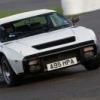
Westland Whirlwind - Classic Airframes 1/48
bryanm posted a topic in Ready for Inspection - Aircraft
I bought this on ebay earlier this year as 'part built' - it had been started but I guess the builder was expecting a 'shake and bake' and had given up. It wasn't too bad to complete, but although it was the second release with the injected canopy it was evidently an early CA mould and a way from the Gosling and Hornet, the other CA models I've completed. It still went together OK with the usual test fitting and some filler, although the fit was generally quite good. It's mostly from the box with just a stretched sprue antenna and the aerial mast moved to the canopy to suit this early production example. I'm still puzzled how this worked - presumably when the canopy was opened, the antenna went slack. I haven't found any photos of the early arrangement with the canopy open and on most photos the antenna is barely visible anyway. The decals looked nice on the sheet but some of them broke up easily, not least the fin flashes. I managed to piece together the bits and then touch them up with paint. One of the upper wing roundels totally disintegrated so they are from the spares box. There is a little silvering even after a good coat or three of Kleer. It's brush painted with Humbrol enamel. Whirlwinds are some of the few aircraft regularly parked with their flaps down, presumably because the flaps and radiators were linked and the Peregrine engines suffered from overheating. Even with the flaps up, the cooling vents in the upper wing surface didn't completely close so there's plenty of scope for scratch builders to work on this area. That's a bit beyond my skill! There's a photo of P6969 in the Warbird monograph looking very tatty and captioned that it was towards the end of 263 Squadron's use of the type, which was January 1944. In fact it was lost on 8 February 1941 in a combat with an Ar 196.- 11 replies
-
- 20
-

-
- Whirlwind
- Classic Airframes
-
(and 1 more)
Tagged with:
-
Right lets get into this: I will be basing my build on this Whirlwind XN358 (for more info check out my blogger (look at my about me) Its a reduced weight whirlwind which is kinda snazzy I am using the Airfix HAS.22 kit to do this build, and i am trying to do an interior, which is proving difficult. I have used a food container (one that you buy from the shop with food) instead of plasticard as this kit has no representation of a floor/bulkheads. It is proving very difficult as interior pictures of the whirlwind are hard to find. The textures on the wall and floors are simply foil rubbed against surfaces in my house, the sound proofing (sides and ceiling) is made by using my chromebook and the floor diamond plate using the handle of my blade. It is very messy at the moment but will be neatened very soon You might notice that 'stuff' in the nose, don't worry, its not the guts of a rat, its blue tack and some thumbtacks to create some weight The other side, not neat but when all the equipment and is closed up it should be less visible You can see the floor here, i have actually removed this now and relayed and more flat one.You can see how much i had to modify the cockpit shape, (i have another whirlwind in the stash) and surprisingly it lines up perfectly with the original piece Here is all the things that need to get modified/removed with marker.
-
Hey guys and girls, This is my rendition of Whirlwind HAS.7 ' XN358 '. (With the help of navy Wings i have found a lot of info on her) I used the Airfix HAS.22 for this conversion...not aftermarket parts were used, just scratch built (first conversion) XN350 , built in 1960, served for 771 squadron at HMS Osprey, Portland. She had her ventral fin removed, tail rotor drive shaft cover removed along with wheel brakes and various things from like unneeded avionics. She was used was turned light weight to increase lifting capacity for the ASR role. This test was never an official test. Before long, she was converted back into conventional HAS.7 standard. She stayed in her markings until moved to 825 NAS in July 1960 where she was painted a grey and orange (like most ASR helis of the time) Later she was moved to 824 NAS in DEcember 1961 until 1963and stayed in the 825 marking. In 1963 she was taken to RN AMS Seafield Park...another move to the lee dump in 1980 until she was taken to the fire dump at RNAS Yeovilton (5 miles from me) in 1981-1982. I would like to do the other renditions of her in the future, but for now i have done her first state With some earlier models, a pair of lynx I can see where i can improve on (for a conversion with no after market parts its pretty good ) Thanks for looking, Rob
-
Finally able to complete the second of my RAF Rescue helicopters after the superb RAFDec decals arrived. XJ409 was delivered to the RAF in 1959, serving in the rescue role as an early HAR2 before conversion to HAR10 standard in the mid-60s. The old Airfix kit dated from even earlier, with 1958 printed on the inside of the ancient Whirlwind HAS22 fuselage. I added a bit of detail in the cockpit and cut the side windows so they could be open, but that was about it. I just wish Airfix would make an HAR10!
- 14 replies
-
- 27
-

-

-
I thought I'd do at least one more yellow chopper for the time being, to display with the Wessex. The Whirlwind looks a bit simpler to build, though will probably end up needing lots of scratch building and mods to make it represent an RAF one. If I remember correctly I think I bought this kit from a stand at the Shuttleworth airshow in 2018. It looks basic! This is what I'm attempting to create. Any Whirlwind experts out there who can give some advice? It doesn't look too different to me. The door is moulded shut so no scratchbuilt cabin interior this time. I'll use some of the left over Wessex decals for the 'Rescue' titles, etc. Not my photo, I'm not that old! Mods remove it if it breaks copyright, it was just a random Google image search, no credits.
-
The Trumpeter kit finished as the shabby HE+V from the well know photo, mostly OOB with just the radio mast moved to match the position on the original aircraft, and the bomb racks omitted as they don't appear on the photo. This was mainly a trouble free build as I didn't try to correct the kit's well publicised errors or add anything extra - if you like that kind of thing check out Sprueloose's WIP - the main issue came when I tried out the Alclad Klear Cote Gloss. For whatever reason, this never dried and was still tacky well over a week later, I had to go over it with some standard Windsor & Newton just so I could handle it, but by then it was too late, there was a lot of dust stuck to it. The Henschel HS129 that I built in tandem also suffered this, so this is one bottle that will be going to the back of the shelf; the search for a really good gloss varnish continues. Chipping was done using the Vallejo chipping fluid, the real aircraft was even worse, lets say this represents it a couple of weeks before that photo was taken... If some of the markings looked painted on that is because they are! First time I have done this, and the Montex set proved pretty easy for squadron codes and serial number, the roundels and fin flashes are decals though from the excellent Xtradecal sets
-
Hi, Just a quick question on the major external differences between the RN Westland Whirlwind HAR9 and the RAF HAR 10. Did the RN HAR 9 have the under fuselage recess for a torpedo like the earlier HAS 7? I know the RAF HAR 10 did not have this feature. I'm planning to convert the Italeri H-19 into a HAR 9 as used in the Antarctic on HMS Protector. Any help with this question greatly appreciated. Cheers, Joe
-
In 1943, the Westland Whirlwind was being withdrawn from service, one factor being lack of support for its Peregrine engines - together with the need to maintain two engines per airframe compared with the single-engined Typhoon intended to replace it. However with development of the Typhoon taking longer than expected, an interim solution was needed to support the second front expected to be opened in France in 1944. The remaining Whirlwind airframes were therefore re-engined with Bristol Mercury XVs, which were in plentiful supply and could provide enhanced performance running on 100 octane fuel. As the radial engines were air-cooled, the radiators could be removed from the wing roots making more volume and weight available for fuel tanks. The wing hard-points were strengthened, to allow carriage of two 1000lb bombs. Finally, the new MkIII IFF was fitted, the rod aerial under the starboard wing replacing the previous tailplane-to-fuselage wiring. Enough aircraft were re-manufactured to equip 263 squadron, which flew as part of 2nd Tactical Airforce over France from February 1944, until finally replaced by the Typhoon at the end of that year. ... Well, it could have happened anyway! Based on the venerable (if that is the right word!) Airfix Whirlwind, with engines from the old-tool Blenheim IV, spare propellers and spinners from the new Spitfire I/II and bombs from the Bomber resupply set. Following my reading of the regulations for D-Day stripes, and 24" wide stripes on the wings of twin-engined aircraft, as well as the 18"-wide fuselage stripes. I kept the sky band forward of the tail, and assumed the squadron codes would be re-painted over the stripes. Decals from a variety of sources, including some of the original airfix ones which had stood up pretty well for a 1980s-era kit. and a few more photos here: Westland Whirlwind FB.2
- 26 replies
-
- 26
-

-
Westland WS-55 Whirlwind HAR Mk.10, XD163, C/n. WA20. At the Helicopter Museum, Weston-Super-Mare. Pics mine. Originally built in 1954 at Yeovil, Somerset as a 12-seat transport helicopter. XD163 is of particular significance as it was not only converted from an earlier mark of Whirlwind, but was in fact in its earlier life the first Whirlwind delivered to the Royal Air Force, and was the first Whirlwind Mk.4. It first flew in April 1954 and operated with the Far East air force. In 1962 it was delivered to Westland's factory for conversion to Mk.10 standard. As the 36th production conversion Mk.10 XD163 first flew in February 1964 and allocated to 2FTS at the Central Flying School helicopter wing Ternhill in 1966. It remained there until 1979 when it was retired and placed in storage at RNAY Wroughton. The aircraft was subsequently transferred to the museum in April 1991 where it was restored and is now on display.Info from the The Helicopter Museum website
-
I decied to build the whirlwind after all. I dont do highly detailed models so losing the etch is no big deal I might even find it again it must be in a box somewhere. Donar kit and the converson kit sprues Marked out ready for cutting The nose is going to need some filler to make it akk join up nicely I will keep the door shut Next up get rid of the cooling grills I will use the red and blue/grey colour sheme supplied in the kit It will look nice along the HAR10 I have already. I have the kits and bits to do the MK7 and HCC12 which is what I will be doing after this one. Cockpit and grill next Rodders
- 26 replies
-
- 2
-

-
- royal navy
- has9
-
(and 2 more)
Tagged with:
-
Hello, I'm presenting my recently finished Westland Whirlwind Mk.I, built as part of the "The Battle of Britain" competition on Polish "Scale modelling with passion" forum. I used Eduards PE's and scratchbuilded some details (eg. moved antenna mast onto the canopy to represent early production variant). Hovewer, I am aware, that not all of the issues of this kit were corrected. All the markings were painted using masks (as you probably know, the decals in this kit are of low quality...). The model was painted using Tamiya and MrHobby Acrylics. You can see all the models built during this competition at this link: http://www.pwm.org.pl/viewforum.php?f=797. Hope you enjoy, Artur
- 21 replies
-
- 34
-

-
- Whirlwind
- trumpeter 1:48
-
(and 1 more)
Tagged with:
-
Hi, Next archive bird - Westland Whirlwind of 263 Squadron RAF, September 1941. This is an Airfix kit, mould form late 1970s, mostly OOB work. I was intending t do here very devestated paint, following well a photo: https://en.wikipedia.org/wiki/No._263_Squadron_RAF#/media/File:Whirlwind_Mk_I,_263_Sqn_Exeter,_in_flight_over_West_Country.jpg But this was just an attempt... Comments welcome Regards Jerzy-Wojtek
-
Hello all, Im interested in building a 1/72 Whirlwind set in Borneo during the 1960s, but my main problem is I don't know the first thing about the Whirlwind really. This is the sort, Im not sure what type of Whirlwind those are, I do note that they have drooped tails and I haven't seen any photos from Borneo without. From what little Ive seen, I know this will take some converting. The only Whirlwind kits I can find at the moment are the old Airfix ones, but they have straight tails. I understand the Italeri H-19B has the right drooped tail but I also understand that they have become hen's teeth. I saw that Heritage Aviation sell a Tropical Nose for a Whirlwind, would that be suitable for Borneo? So, in the current kit climate, where would I begin? Any help will be much appreciated. Thank you, Conor
-
As a child of RAF Chivenor I have built a small collection of Hunters & Hawks in 1/72 & 1/48 scale, but I have a big hole in my collection and that is the 22 Squadron SAR Helos. I did attempt a HAR 4 a few years ago with the aid of RAFDECS sheet but it didnt turn out too good. The HAR 10's were a daily sight where I grew up in Braunton next to the base and during the summer they could be seen plucking grockles out of the sea at Croyde & Saunton!! Anyway, this is not so much a WIP but more a look at what i did as the model is pretty much finished but I dont want to clog up RFI with progress pics. I recently picked up a job lot of four unboxed Airfix Whirlwinds for a tenner (bargain!), I sold a couple and thought i'd attempt a MK10 conversion with one of the others. I picked up an Airwaves MK10 nose on ebay and set about chopping the kit up to see if it would fit! I only attempted the most obvious changes ie the nose and the bent tailboom, I expect there are more suble differences that I hadnt noticed but i'm sure somebody will! :-) I'm not expecting this to be 100% accurate but just a bit of fun really and if I can end up with something that looks a bit like a 10 in the cabinet i'll be happy!! First up, heres the helo I am modelling with the aid of RAFDEC sheet and some spares for the serial XP350. Photo taken by my brother on Braunton Burrows sometime in the late seventies I think. Here's the sprues and extras. This mould is dated 1950 something and it shows, pretty basic with minimal interior detail and lots of rivets! First thing to do was chop the nose off, I measured the width of the Airwaves nose and the kit fuselage and it was pretty close, only problem was I had to remove the whole of the front end from under the windscreen to get the resin part to fit. Next up was the tail, I cut it in rougly the right place and then cut the boom at aprox the right angle to get the drooping tail, may have gne a bit too far but if I'm going to all this trouble it may as well notice!! I also had to remove the faring between the boom and fuselage and re-build this out of plastcard. Managed to get the boom back on with a lot of filling & sanding and the nose is taped on, so far so good! I'll add some more photos when finished.... And heres some more old pics of 22 at Chiv... http://www.britmodeller.com/forums/index.php?/topic/72577-chivenor-sar-old-photos/
-
Westland WS-55 Whirlwind HCC Mk.12, XR486, C/n WA418. The Mk.12 was the first production example built in 1964 and one of only two VVIP aircraft built for the Queens Flight. The interior was fitted with special soundproofing, luxury fittings, chrome trim and a high gloss exterior finish. During it's operational duty the museums example was piloted by HRH Prince Philip, and The Prince of Wales. XR486 Joined the museum collection in June 2000.Info from The Helicopter Museum Pics mine.
-
This is my version of Trumpeter's Westland Whirlwind. The kit assembles pretty straight forward but is sparse when it comes to decals. I went ahead and cut out the area behind the seat bulkhead and added a radio tray and a couple of instrument boxes from the spares box. It's a pretty tight fit but adds just enough detail to make it a little interesting. The decals in the kit are thick so I decided to use some others from old sheets. Had to make up plane numbers because that's all I had so the livery is fictitious. I guess the bottom line is the cockpit is green and it looks mostly like a Whirlwind.
- 12 replies
-
- 21
-

-
- Whirlwind
- shutherland
-
(and 1 more)
Tagged with:

